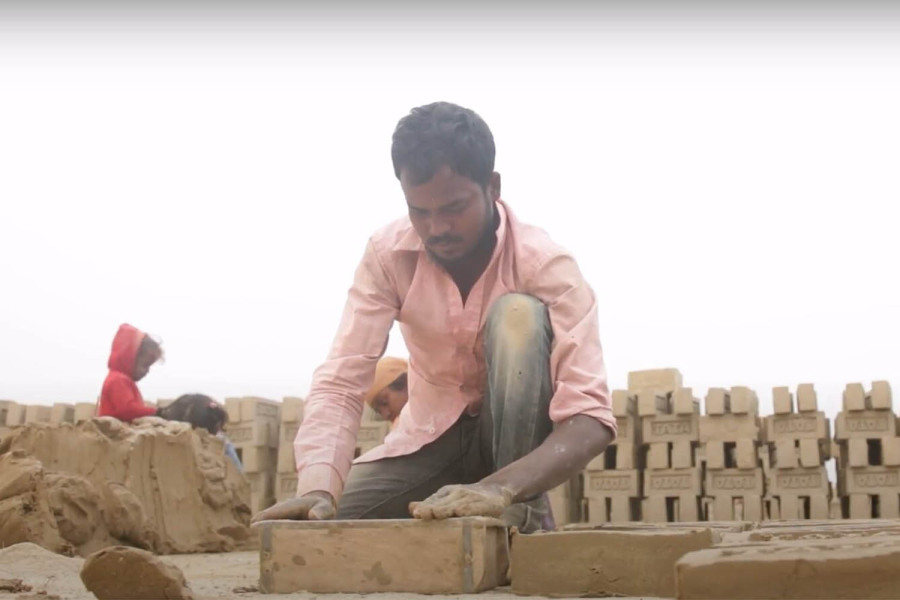Culture & Lifestyle
Mapping the roots and trajectories of Madheshi filmmaking
Rajbiraj-based filmmaker Suresh Mukhiya discusses the inspirations, possibilities and limitations of Madhesh-based documentary filmmaking.
Kshitiz Pratap Shah
I recently had the opportunity to watch Suresh Mukhiya’s ‘The Killing Kiln’, a short documentary about the lives of workers in the brick kilns of Madhesh. The story captures how these workers risk their lives to earn a living.
Although the movie is only 15 minutes long, it evokes an emotional connection with the workers. It is also brilliantly shot and feels larger in scale than its setting but very grounded in its theme. Yet, most importantly, it made me curious about Madeshi filmmakers telling Madeshi stories.
Documentaries are often seen as offshoots of filmmaking, secondary in form and accessibility. Many people watch documentaries simply to learn and educate—they are treated as textbooks of the audiovisual world.
Documentaries are also associated with facts; it is easy to mistake them as truthful accounts of the subject matter being recorded. Yet, in my discussions with Mukhiya, it is apparent that there is a unique license for creativity, experimentation, and simply having fun with the form of the documentary itself.
He states, “I started making documentaries quite late, but once I did, I discovered that it allowed me to express myself. It finally felt like my way of filmmaking, as I was more comfortable telling stories of my land and people.” This is the benefit of documentary-making and how it can be essential to any community’s identity.
Along with ‘The Killing Kiln’, Mukhiya has made movies on other issues of Madhesh, like the citizenship issue of a child with a single mother and victims of the dowry system. In the former case, Mukhiya claims, “I made that film on a real story as my experiences resonated with the child in many ways. Several young people in Madhesh, going through similar scrutinies, will also relate with the struggles shown.” Through Mukhiya’s works, the youth of Madhesh gain another voice to share their experiences with the world.
Yet, Madhesh also encounters the same issues with filmmaking and documentaries that are common. Parents and prospective filmmakers do not see documentaries as a viable option, mainly because they think it is not financially feasible.
Mukhiya remembers facing the same issues when he wanted to study scriptwriting formally. He says, “I remember learning many new things about filmmaking in Delhi, but I could not imagine asking my parents to fund my formal studies. It is an expensive degree, and it was unimaginable for anyone to think of spending to study filmmaking.” This has led to many community members learning their craft through more informal means, such as YouTube videos, Masterclasses, coaching centres, and extracurricular activities.

Yet, this informal, secondary space for filmmaking has increased with the recent advent of social media. Mukhiya recalls, “There used to be nationwide screenwriting competitions. I participated in those back in 2014 and 2015. Although I did not win, I gained a lot of contacts and improved my craft.”
Such contests are becoming prevalent, and Mukhiya, the runner-up both times he participated, inspired many youngsters from Madhesh to write scripts.
He then talks about another opportunity that led him to focus on documentaries. It was an online filmmaking competition about indoor life during the pandemic. He says, “Now, many online competitions are popping up, and after the lockdown, people have realised they don’t need more than a camera and a good story to make films. This will drastically change the landscape of filmmaking in Madhesh. This reduces the need for heavy financial investments, a barrier for new filmmakers in Madhesh. Like Mukhiya, who is based in Rajbiraj and creates films on local issues, many filmmakers don’t have to come to Kathmandu; they can create stories about the place they are based.
Mukhiya, who studied directing and screenwriting in Kathmandu, says, “There are limitations to formal film studying. For my degree, I mostly made films about the social life of Kathmandu, which I could not connect to.”
This has led to an influx of movies featuring people from Madhesh, which brings us back to ‘The Killing Kiln’. This is a movie that is very much possible due to recent changes. A creator like Mukhiya, learning from both the formal and informal institutes of films, is very much a product of the changing filmmaking landscape of Nepal.
The accessibility of resources and freedom to tell the story of Madhesh without institutional help are very modern notions. “The trend of bringing Madhesh-based stories to the front has also evolved in the last decade or so, with the heavy documentation of the various Madhesh movements,” he said.
Mukhiya also reminds us of the endless possibilities of such stories. He recounts, “In my time ideating for projects that appealed to me, I got to talk to many locals. I was limited within Madhesh, so I talked to authors and historians and listened to folktales. For a Madheshi filmmaker, the land is a story mine, and now we can bring these stories forward.” This message is to the Madeshi people to heed the calling of their land. Hidden in that call is the fact that Madhesh has many stories to tell, and many storytellers are bringing it forward.




 22.64°C Kathmandu
22.64°C Kathmandu















